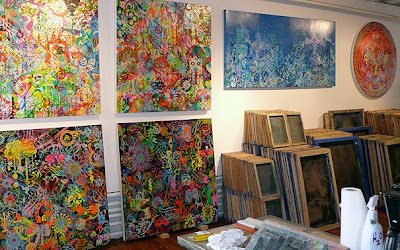A fellow in England named Carl Warner assembles tableaux, very elaborate tableaux, from common foodstuffs. The pieces resemble landscape paintings (plus the occasional still life) and are the damnedest things. You can see 14 of them here.
For the leadoff I chose one that might be a trippy prog-rock album cover. There are some others in that vein, but most of the pieces are more traditional. Warning: all of the works are lush stuff, so stay away if you have a low banality threshold. Also stay away if you’re weirded out by camp mimicry.
Via Andrew Sullivan and Ezra Klein.
UPDATE: Holy, shit, there are two people in England doing this crap. I guess everyone got tired of writing good comics.
The other one is named Gayle Chong Kwan and a few of her works are here, along with some pointless photos of London Metro crowds looking at the works. You’ll see that Ms. Kwan doesn’t try to fool the eye the way Mr. Warner does. Her stuff is obviously a lot of pasta arranged with care. You’re supposed to experience the food on its own terms even while it functions within … oh, never mind. The title of her exhibition is Cockaigne, after the magic medieval land of food everywhere. Kind of a pretentious choice, but she put in the time gluing pasta and she did it well, so she can be forgiven.
Ms. Kwan comes to us by way of a commenter at Ezra Klein’s site. Thanks, Marc!



